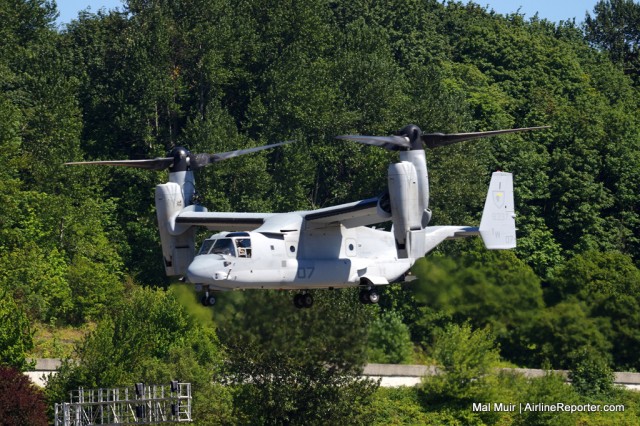
A MV-22B Osprey on approach to Boeing Field
Summer in Seattle means lots of things to locals in the Pacific Northwest. Long days with the sun setting at 10pm, with Mt. Rainier standing out tall and proud in the skyline. Blue skies, sun, and outdoor fun, but most of all it means one thing for AvGeeks: Jet noise!
During the first weekend of August in Seattle is Seafair, and the main attraction has always been the Blue Angels (it also coincides with Fleet Week). However, this year, things were a little bit different over the skies and on the ground in Seattle. The United States Marine Corps (USMC) came to town. They were not going to let the US Navy have all the fun, and this year, it was time to bring Marine Week to Seattle.

The United States Marine Corps takes over the Museum of Flight for Marine Week – Photo: Jennifer Nagle
This year the USMC decided to bring Marine Week to Seattle to showcase and honor not only the Marine Corps as a whole, but also how much of a role the Corps has to the local area. People in Seattle could meet the Marines themselves, learn about what they do, why they do it, and then get to see how they do it. The biggest part of the weekend would be the Marine Air Ground Task Force (MAGTF) demonstration over the skies of Lake Washington.
A good portion of the Marine Week festivities were being showcased at the Museum of Flight. To help AvGeeks get an early taste before the official program began, they hosted a group of us on the balcony to watch preparations. As the Marines transformed the museum’s parking lot into the focus of the week, vehicles and aircraft were moved in to allow people to explore. The highlight of the day for me was watching them roll in the Bell Boeing MV-22B Osprey, an aircraft I would get up close with later in the week.
The Osprey is a unique aircraft known as a tilt rotor. Able to take off and land like a helicopter, but also capable of cruising in flight like a turboprop gives this aircraft unique abilities. It can fly at a speed almost double what a helicopter of the same size could do.
The engine nacelles tilt up or down, giving it the “tilt rotor” name. However, to give the aircraft the power to take off and land, you need large rotors, and in this case the Osprey has three blades on each engine.
Three very LARGE blades; when you look at them on the ground, they sure do dominate. As the aircraft was also designed to deploy from smaller naval vessels, the rotors and wings can fold down to allow for better storage. How much can it fold down? Well, the width and length of the main fuselage is all you need to store one of these aircraft when not in flight. It can pretty much store within itself!
Getting up close with the Osprey later in the week allowed me to really see just how big those rotors are, and how small the Osprey actually seems. The inside can hold ten tons of cargo, but isn’t big enough to fit a vehicle. Not being able to carry one internally isn’t that big of a problem for the Osprey. Rig some ropes or chains underneath, and it can just lift it into the fight!
The icing on the cake for AvGeeks during Marine Week is the Marine Air Ground Task Force Demonstration (MAGTF). Held right before the Navy Blue Angels got into the skies, the demonstration showcased what the Marine Corps can do in a battle by coordinating units on the ground, in the air, and their logistics.
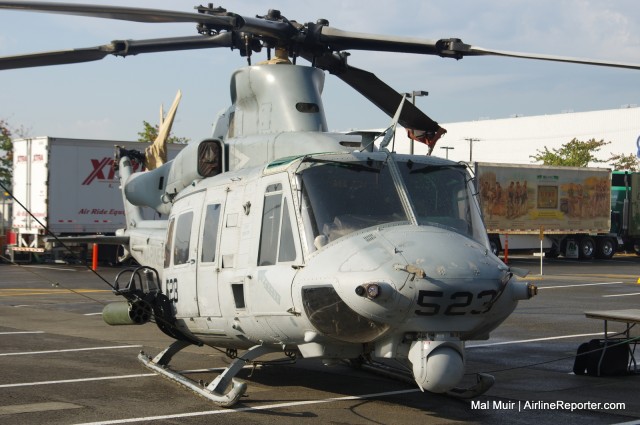
A UH-1Y Venom Helicopter on display at Marine Week
Although you won’t see too much of a ground component due to the lake, the MAGTF demo got to show the kind of insertions the Marines would do into a water area. Participating was almost every aircraft type from the Marine Corps fleet, from the new Viper & Venom (no longer the Vietnam-era versions of the Cobra and Huey you once knew) helicopters, along with the Osprey, Sea Knight, Super Sea Stallion & even a Hornet or two into the mix.
Watching the Stallions drop some troops into the lake along with a rubber boat, then forming up in the sky with a KC-130J Hercules tanker to take on some fuel was an amazing sight. Watching a helicopter do air-to-air refueling looks like such an unnatural act. Add in high-speed passes by Harrier’s demonstrating close air support and then a few more passes with some hovering time in between.
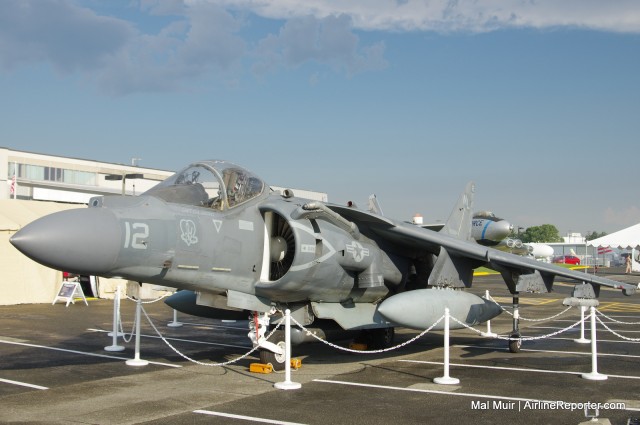
AV-8B Harrier sitting at the Museum of Flight
The closing of the MAGTF demo has a fly past of most of the helicopters involved with the demonstration, but the real culminating event was the extraction of a few troops from the middle of the lake. After fast roping onto a barge in the lake from a UH-1Y Venom, the Marines readied for the helicopter’s return. When it did, they hooked up into a special rig that would lift them out, together, on the one rope. The Special Patrol Insertion/Extraction technique is a unique way to get in or out of a location. It essentially looks like they are dangling from the end of a rope below the helicopter. Not something I would want to try!
Bonus: Get a Marine’s View of this demonstration from SeaFair
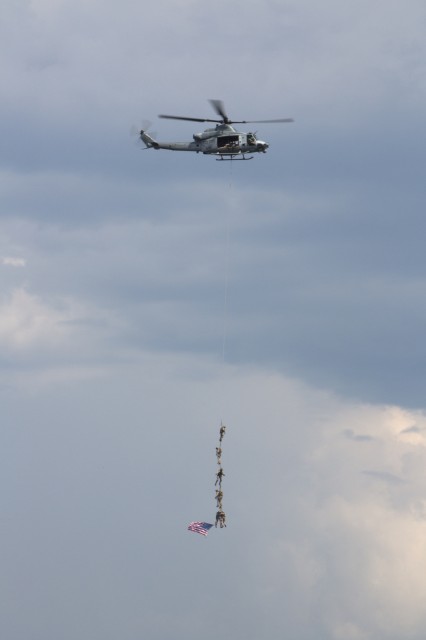
A UH-1Y Venom picks up a group of Marines and exfils them from Lake Washington Photo: Jennifer Nagle
Marine Week was most certainly a great event, allowing people to be able to get up close and personal not only with the aircraft and equipment of the USMC, but also with the Marines themselves. The USMC do a fantastic job serving our country, and a week showcasing them is never really enough. Hopefully we can see Marine Week return to Seattle again in the future!
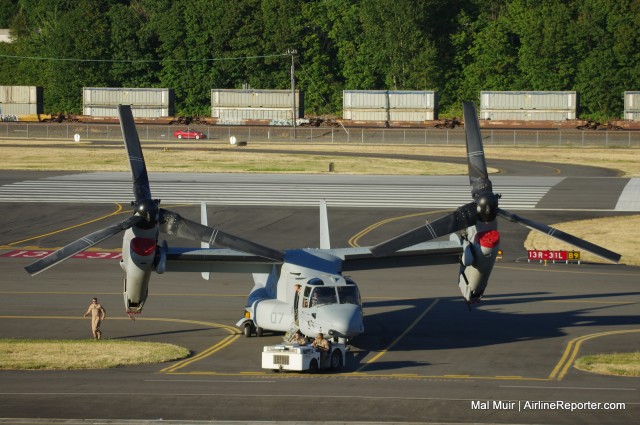
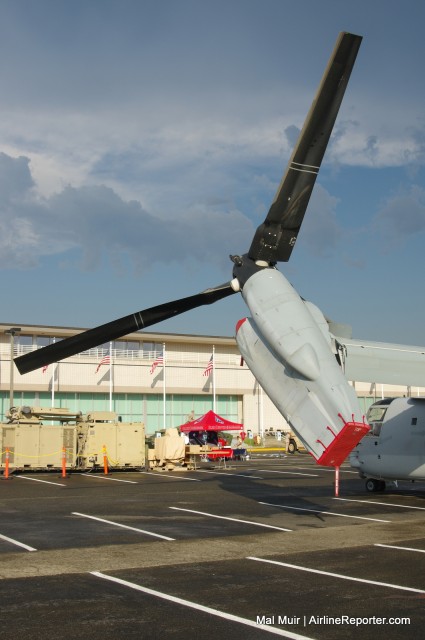
I had the chance to chat a bit with one of the HMLA-169 pilots next to his Venom in the hangar deck of the Essex. As a former Navy SAR helo pilot, I had many friends from that squadron from my deployment with them on the Tarawa during Desert Storm. It was good to see that the squadron was still around.
No kidding about the ‘Y’ not being a ‘N’ anymore! Even the back up avionics are digital — quite a change from the “steam gauge” era of the helos I flew and the UH-1Ns from that time.